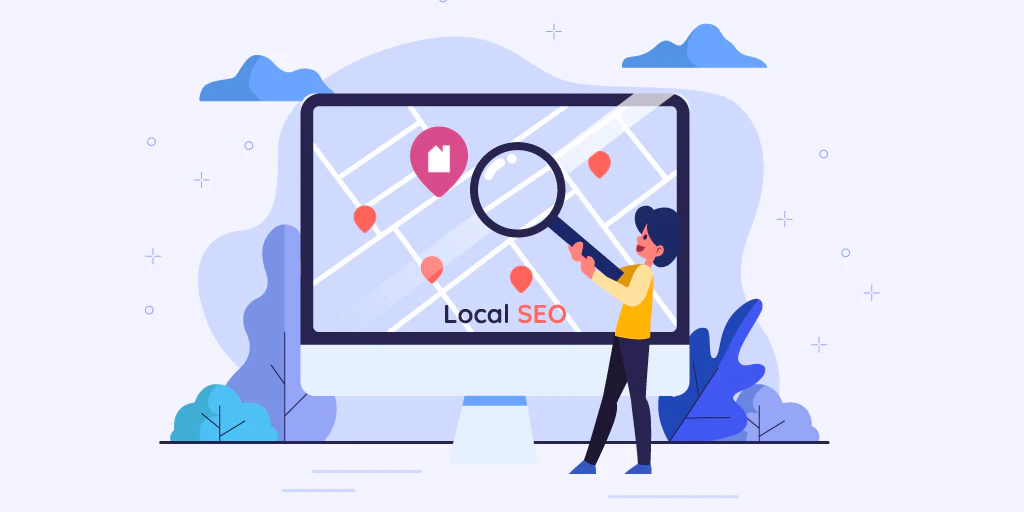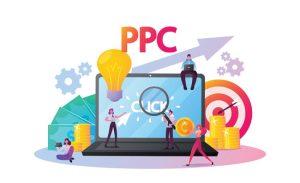Local SEO can be beneficial to any business with a physical address or that serves a specific geographic area. Local SEO is beneficial if you are searching Google for important keywords that relate to your business, and you see a map (also called a map pack) with three listings underneath.
To understand local SEO you must first understand how Google works.
What is the Evolution of Search Engines?
Early on, the internet was relatively small, and navigating it was simple. Search engines were developed to help users find sites more easily once the internet expanded.
When you entered a phrase in a search engine it was matched with websites that contained the keywords. Google adopted the same method, but quickly overtook the competition when it was the first to use hyperlinks between websites in order to determine which sites were trustworthy and authoritative.
Google today looks at hundreds factors, both on and outside your website, to determine whether it is relevant to display as search results. The factors that make up your “digital foot print” are weighed or valued differently by the search engine. Your digital footprint will determine whether you are a top Google result for a search query.
The majority of people are unaware that Google doesn’t perform a search on the internet when someone enters something in the search bar. In reality, it’s searching a copy of all the sites Google has found. This copy is known as the Google Index.
Google crawls the web using small programs known as “spiders”. Each spider follows the same pattern: it starts with a page and then looks at the content of the pages below.
Google indexes web content as it is crawled. Spiders crawl trillions of web pages in a blink of an eye. The index is kept as current as possible, and new sites and links are found quickly.
Google’s Search Ranking
Google uses a variety of processes to quickly rank hundreds of thousands of websites. These processes are known as algorithms. Google checks its index to return a list with organic results that matches your search. These results are ranked and chosen based on the relevance, prominence and popularity of inbound links.
The algorithm uses a combination of on-site and offline factors to identify websites that are relevant to your search. The algorithm adds all relevant websites to a list that is then ranked according to prominence. The algorithm, which takes into account both on-site and offline factors, determines the sites that best match your search query. These sites appear at the top.
Improved SEO can influence relevancy, prominence, and link popularity for your website. When the digital footprint of your website is optimized, it will show up in more search results.
Google’s local SERPs (search engine results pages) will show you a list of pizza delivery places near your office if you search for “pizza”.
If you do the same search at your home, however, you will get a completely different set of results. It makes sense if you want a nearby pizza delivered.
Local search has existed for many years but was only available to those who used desktop computers. Mobile search has increased dramatically with the growth of mobile internet access. Local SEO is therefore vital for any local business or marketer.
When you are new to and marketing your business on the internet one of your biggest challenges will be knowing where to focus your efforts to maximize their effectiveness.
Moz, a software company that specializes in marketing analytics, has published its annual Local Search Ranking Factors survey. This survey includes 35-40 of the world’s leading experts on local SEO. The results of the survey provide the most accurate information on what factors affect local SEO services in New Zealand and improve local search visibility.
Localized content, local link popularity, and SEO best practices are all factors in Google’s search algorithm. It is important to take this into account when developing your marketing strategy and linking building.
Local SEO rankings also consider location-based factors, such as having a listing on Google My Business and local citations. These should come from your local customers.
There are also SEO tools that focus on local search. These can assist you in developing local SEO audits. They include keyword research that is focused on your local market, building citations and managing Google My Business listings.
Website Content plays a major role, as does Google’s search algorithm. However, other factors such as Google My Business and Citations are also taken into account.
Start Harnessing SEO
You can now focus on the signals that will optimize the digital footprint of your site in the localized search ecosystem. Your business will appear higher in the search results, which could lead to more customers finding you.
Local search is changing and growing, so it’s important to keep up with the changes. Moz’s survey will help you to keep track of which signals are becoming more important and which ones are not. This information can be used to create your strategy. You’ll have the ability to reach more people within your geographical region and grow faster once you improve each of these important signal areas.







